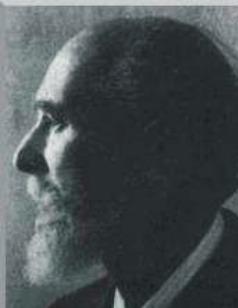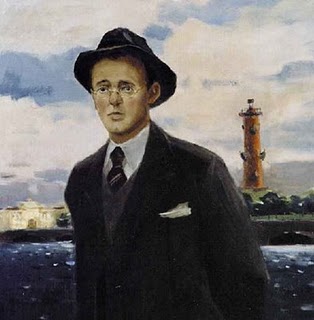<Back to Index>
- Mathematician Eugène Charles Catalan, 1814
- Jeweler Peter Carl Fabergé, 1846
- Grand Prince of Novgorod and Vladimir Alexander Nevsky, 1220

Peter Carl Fabergé also known as Carl Gustavovich Fabergé in Russia (Russian: Карл Густавович Фаберже, May 30, 1846 – September 24, 1920) was a Russian jeweler of French origin, best known for the famous Fabergé eggs, made in the style of genuine Easter eggs, but using precious metals and gemstones rather than more mundane materials.
He was born in Saint Petersburg, Russia to the jeweller Gustav Fabergé and his Danish wife Charlotte Jungstedt. Gustav Fabergé’s father’s family were Huguenots, originally from La Bouteille, Picardy, who fled from France after the revocation of the Edict of Nantes, first to Germany near Berlin, then in 1800 to the Baltic province of Livonia, then part of Russia.
Initially
educated in Saint Petersburg, Russia, in 1860 Gustav Fabergé,
together with his wife and children retired to Dresden, leaving the
business in the hands of capable and trusted managers. Peter Carl
possibly undertook a course at the Dresden Arts and Crafts School. Two
years later Agathon, the Fabergés second son was born. In 1864,
Peter Carl embarked upon a Grand Tour of Europe. He received tuition
from respected goldsmiths in Germany, France and England, attended a
course at Schloss’s Commercial College in Paris and viewed the objects
in the galleries of Europe’s leading museums. His travel and study
continued until 1872, when at the age of 26 he returned to St
Petersburg and married Augusta Julia Jacobs. For the following 10
years, his father’s trusted workmaster Hiskias Pendin acts as his
mentor and tutor. The company was also involved with cataloguing,
repairing and restoring objects in the Hermitage during the 1870s. In
1881 the business moved to larger street-level premises at 16/18
Bolshaya Morskaya. Upon
the death of Hiskias Pendin in 1882, Carl Fabergé took sole
responsibility for running the company. Carl was awarded the title
Master Goldsmith, which permitted him to use his own hallmark in
addition to that of the firm. Carl Fabergé’s reputation was so
high that the normal three-day examination was waived. His
brother Agathon, an extremely talented and creative designer, joined
the business from Dresden where he had also possibly studied at the
Arts and Crafts School. Carl and Agathon were a sensation at the Pan-Russian Exhibition held in Moscow in
1882. Carl was awarded a gold medal and the St Stanisias Medal. One of
the Fabergé pieces displayed was a replica of a 4th century BC
gold bangle from the Scythian Treasure in the Hermitage. The Tsar
declared that he could not distinguish the Fabergés' work from
the original and ordered that objects by the House of Fabergé
should be displayed in the Hermitage as examples of superb contemporary
Russian craftsmanship. The House of Fabergé with its range of
jewels was now within the focus of Russia’s Imperial Court. When
Peter Carl took over the House there was a move from producing
jewellery in the then fashionable French 18th century style, to
becoming artist-jewellers. Simplistically this resulted in reviving the
lost art of enamelling and concentrating on setting every single stone
in a piece to its best advantage. Indeed, It was not unusual for
Agathon to make ten or more wax models so that all possibilities could
be exhausted before deciding on a final design. Shortly after Agathon
joined the firm, the House introduced objets deluxe: gold bejewelled items embellished with enamel ranging from electric bell pushes to cigarette cases, including objets de fantaisie. In 1885 Czar Alexander III gave the House of Fabergé the title ‘Goldsmith by special appointment to the Imperial Crown’. The Czar also commissioned the company to make an Easter Egg as a gift for his wife, the Empress Maria.
The Czar placed an order for another Egg the following year. However,
from 1887, Carl Fabergé was apparently given complete freedom
with regard to design, for future Imperial Easter Eggs for from this
date the Eggs become more elaborate. According to the Fabergé
Family tradition, not even the Tsar knew what form they would take: the
only stipulation was that each one should contain a surprise. The next
Czar, Nicholas II, ordered two eggs each year, one for his mother and one for his own wife, Alexandra. The tradition continued until the October Revolution. Although
the House of Fabergé is famed for its Imperial Easter Eggs, it
made many more objects ranging from silver tableware to fine jewelry.
Fabergé’s company became the largest jewelery business in
Russia, with 500 employees. In addition to its Saint Petersburg head quarters, it had branches in Moscow, Odessa, Kiev and London. It produced some 150,000 to 200,000 objects from 1882 until 1917. In 1900 his work represented Russia at the 1900 World’s Fair in Paris. As Carl Fabergé was a member of the Jury, the House of Fabergé therefore exhibited hors concours (without
competing). Nevertheless, the House was awarded a gold medal and the
city’s jewellers recognised Carl Fabergé as maître.
Additionally, Carl Fabergé was decorated with the most
prestigious of French awards – he was appointed a Knight of the Legion
of Honour. Two of Carl’s sons and his Head Workmaster were also
honoured. Commercially the exposition was a great success and the firm
acquired a great many orders and clients. In 1916 the House of Fabergé became a joint-stock company with a capital of 3-million rubles. The following year upon the outbreak of the October Revolution,
the business was taken over by a Committee of the Employees of the
Company K Fabergé. In 1918 The House of Fabergé was
nationalised by the Bolsheviks. In early October the stock was
confiscated. The House of Fabergé was no more. After
the nationalisation of the business, Carl Fabergé left St
Petersburg on the last diplomatic train for Riga. In mid-November, the
Revolution having reached Latvia, he fled to Germany and first settled
in Bad Homburg and then in Wiesbaden.
Eugène, the Fabergés' eldest travelled with his mother in
darkness by sleigh and on foot through snow-covered woods and reached
Finland in December 1918. During June 1920 Eugène reached
Wiesbaden and accompanied his father to Switzerland where other members of the family had taken refuge at the Bellevue Hotel in Pully near Lausanne. Peter Carl Fabergé never recovered from the shock of the Russian Revolution. In exile, the words always on his lips were, ‘This life is not worth living’. He died in Switzerland on September 24, 1920. His family believed he died of a broken heart. His
wife Augusta died in 1925. The two were reunited in 1929 when
Eugène Fabergé took his father’s ashes from Lausanne and
buried them in his mother’s grave at the Cimetière du Grand Jas in Cannes, France. Fabergé had four sons: Eugéne (1874–1960), Agathon (1876–1951), Alexander (1877–1952) and Nicholas (1884–1939). Descendants of Peter Carl Fabergé live in Europe, Scandinavia and South America. No one is alive today who personally knew Peter Carl Fabergé (1846–1920). Stories
have been handed down the Fabergé family. Additionally Henry
Bainbridge, a manager of the London branch of the House of
Fabergé recorded recollections of his meetings with his employer
in both his autobiography and the book he wrote about Fabergé.
We are also given an insight into the man from the recollections of
François Birbaum, Fabergé’s senior master craftsman from
1893 until the House’s demise. From Bainbridge we know that while punctilious with his dress, Fabergé 'rarely if ever wore black but favoured well-cut tweeds'. He added ‘There was an air of the country gentleman about him, at times he reminded one of an immaculate gamekeeper with large pockets.’
He was a very focused individual with no wasted actions or speech. He
did not like small talk. When
he noticed an unsuccessful article, he would call for his senior master
craftsman and make endless derisory and ironical remarks. On occasions
when Birbaum realised Fabergé was the designer, he would show
him his sketch. Fabergé would then smile guiltily and say, ‘Since there is nobody to scold me, I have had to do it myself’.
From Birbaum we also know that he was famous for his wit and was quite
merciless to fops, whom he hated. He
never travelled with luggage, but bought all his requisites at his
destination. Bainbridge concludes, ‘Taking
him all in all, Fabergé came as near to a complete understanding
of human nature as it is possible for a man to come, with one word only
inscribed on his banner, and that word – tolerance. There is no doubt
whatever that this consideration for the worth of others was the
foundation for his success.’









